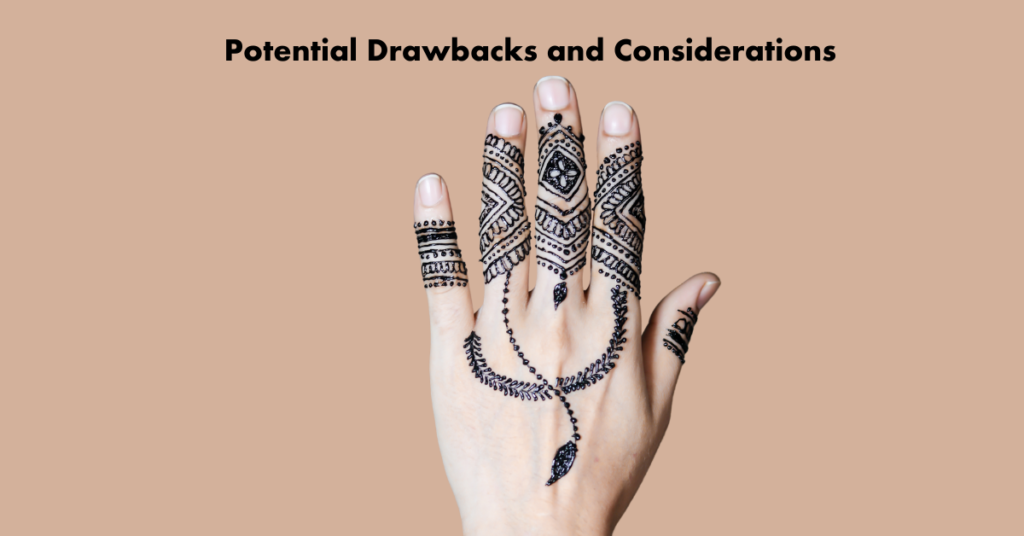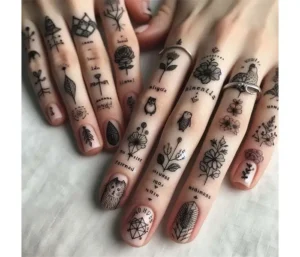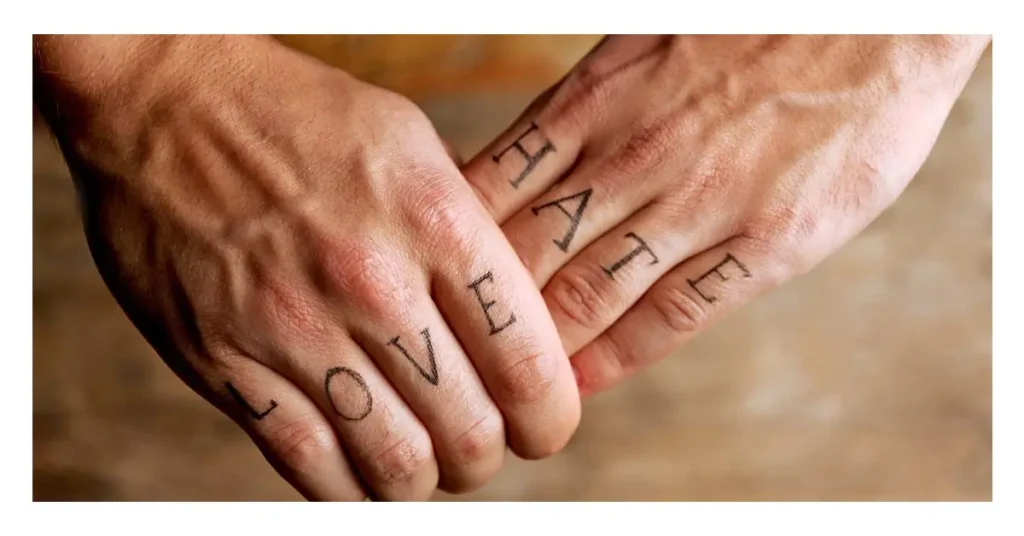Finger tattoos have gained significant popularity recently, becoming a staple in body art. Unlike traditional tattoos, which are often larger and placed on more visible body parts, finger tattoos offer a unique and discreet way to express oneself.
This article explores finger tattoos, their pros and cons, pain levels, design ideas, aftercare tips, and more.
Contents
- Tiny Tattoos, Big Impact: A Guide to Finger Ink
- Pros and Cons of Finger Tattoos
- Pain Level and Healing Process
- Tips for Faster Healing of Your Tattoo
- Design Ideas for Finger Tattoos
- Choosing the Right Placement
- Tattoo Aftercare for Finger Tattoos
- Cultural Significance of Finger Tattoos
- How To Unveil the Truth About Back Tattoos: Everything You Need to Know
- Celebrities and Finger Tattoos
Tiny Tattoos, Big Impact: A Guide to Finger Ink
Finger tattoos are the mini-masterpieces of the body art world. These delicate designs grace digits with a touch of rebellion, artistic flair, or personal meaning. Whether you’re a seasoned ink collector or a tattoo newbie, the allure of adorning your fingers with a tiny symbol or intricate pattern is undeniable. But before you dive headfirst into the world of finger ink, let’s explore this unique tattoo trend:
1. The Delicate Dance of Design
Given their small surface area, finger tattoos require a refined and delicate approach. Unlike larger tattoos, they benefit from minimalist designs that prioritize detail and meaning without overcrowding. Thin lines, thoughtful use of negative space, and subtle, symbolic elements define the art of finger tattoos. Designs such as petite florals, tiny mandalas, or minimalist symbols work well on fingers, capturing intricate beauty within a small, intentional layout. These delicate patterns offer the wearer a quiet yet meaningful reminder with every glance.
2. The Commitment Factor
Finger tattoos may be small, but they demand a serious commitment. Because fingers are frequently exposed and have thin, highly mobile skin, these tattoos face rapid wear and are prone to fading. Environmental exposure, friction, and natural skin regeneration make it likely that finger tattoos will need touch-ups over time. This level of maintenance and the potential for quick fading make finger tattoos a commitment that requires both dedication and patience from the wearer.
3. Pain, Glorious Pain
Finger tattoos are notorious for being among the more painful tattoo experiences. The thin skin and a high density of nerve endings mean each line and detail can deliver intense sensations. While the pain can be quick due to the smaller design area, it’s often described as a sharp, concentrated experience. Many who get finger tattoos believe the pain is part of the beauty and appeal—after all, the phrase “no pain, no gain” has its roots in meaningful, enduring achievements.
4. Breaking the Mold
As prominent pieces, finger tattoos defy the traditional idea of hidden or private tattoos. They are symbols of self-expression, placed where they can be seen regularly, often making bold personal statements. Ideal for individuals who embrace their unique style and want a small yet significant form of expression, finger tattoos help break the mould of what’s conventional. In their simplicity, they carry a certain rebellious charm and originality, speaking volumes about the wearer’s confidence and personality.
5. A Canvas for Every Story
Though small, finger tattoos are rich with potential for personal storytelling. Whether symbolizing memories, goals, loved ones, or values, these tattoos become highly personalized mementos on an intimate canvas. A single line or symbol can encapsulate a moment, a person, or an inspiration in ways only the wearer understands. Finger tattoos can also serve as discreet, constant reminders of significant intentions, values, or even a lighthearted joke shared with close friends, showcasing the endless possibilities for personalization and self-expression.
So, are you ready to join the finger tattoo revolution? Remember, it’s a decision not to be taken lightly. Do your research, choose a design that speaks to you, and find a skilled artist specializing in finger tattoos. With careful consideration and a touch of daring, your fingers can become a canvas for tiny masterpieces that tell your unique story to the world.
Pros and Cons of Finger Tattoos

Advantages of Finger Tattoos
Finger tattoos are highly customizable, allowing individuals to express their creativity with small, intricate designs. They serve as a subtle form of self-expression and can hold deep personal meaning. Additionally, finger tattoos tend to heal relatively quickly due to the smaller size of the tattooed area.
Potential Drawbacks and Considerations
However, finger tattoos come with their own set of challenges. The skin on the fingers is thinner and experiences more movement than other body parts, making it prone to fading and distortion over time. Additionally, finger tattoos may be more painful due to the area’s lack of muscle and fat.

Pain Level and Healing Process
Discussing Pain Intensity
The pain level associated with finger tattoos varies from person to person. Factors such as pain tolerance and the specific placement of the tattoo can influence the experience. Generally, individuals can expect discomfort during tattooing, but the pain is often manageable.
Tips for Faster Healing of Your Tattoo
To help your tattoo heal as quickly and smoothly as possible, follow these essential aftercare tips:
1. Follow Your Tattoo Artist’s Aftercare Instructions
Your tattoo artist will provide specific aftercare guidelines based on the size, location, and type of tattoo you received. Adhering to these instructions is crucial, as they are tailored to ensure optimal healing and prevent complications like infections. Take note of recommended products, cleaning routines, and any additional advice your artist may provide.
2. Keep the Tattoo Clean and Moisturized
Proper hygiene is vital for a healing tattoo. Wash the tattoo gently with lukewarm water and a mild, fragrance-free soap, avoiding any scrubbing motions. Pat the area dry with a clean towel or let it air dry to prevent irritation. Once dry, apply a thin layer of an approved, fragrance-free moisturizer to keep the skin hydrated. Hydrated skin heals better, reducing the chance of scabbing and peeling.
3. Avoid Sun Exposure
Direct sunlight can damage a fresh tattoo, causing fading and potential burning. Avoid exposing the tattoo to the sun until it’s fully healed, which usually takes 2-4 weeks, depending on the size and placement. When healed, consider applying sunscreen with a high SPF to protect the tattoo’s vibrancy and prevent sun-related damage.
4. Resist the Urge to Scratch or Pick
It’s normal for a healing tattoo to feel itchy or scab in some areas. However, scratching, rubbing, or picking at the tattoo can damage the skin and prolong healing. Interfering with the healing process may also lead to scarring or loss of pigment. If itching becomes uncomfortable, apply a small moisturizer or gently pat the area to ease the sensation.
5. Stay Hydrated and Maintain a Healthy Diet
Drinking plenty of water helps keep your skin hydrated from the inside out, which supports faster healing. A balanced diet with adequate vitamins and minerals, such as vitamin C, zinc, and protein, can promote cell regeneration and immune support, aiding in a smoother recovery process.
6. Wear Loose Clothing
Tight clothing can rub against a fresh tattoo, irritating it and potentially causing delays in healing. Opt for loose-fitting garments that won’t press against the tattooed area. Allowing air circulation around the tattooed skin will help it heal faster and reduce the risk of infections from friction or trapped sweat.
You’ll help your tattoo heal faster by consistently following these tips while preserving its design and color quality.
Design Ideas for Finger Tattoos

When it comes to finger tattoos, the possibilities are endless. From minimalist designs to intricate patterns, there’s something for everyone. Popular choices include geometric shapes, floral motifs, initials, and symbols with personal significance.
Choosing the Right Placement
Factors to Consider
When choosing the placement of a finger tattoo, factors such as visibility, job restrictions, and the potential impact on daily activities must be considered. Some individuals opt for tattoos on the sides or top of the finger for a more discreet look, while others prefer the underside for a more subtle appearance.
Popular Placements for Finger Tattoos
Popular placements for finger tattoos include the sides, the tops of the fingers, and the inside of the fingers. Each area offers its unique aesthetic and allows for different design possibilities.
Tattoo Aftercare for Finger Tattoos
Importance of Proper Aftercare
Proper aftercare is crucial for ensuring the longevity and vibrancy of your finger tattoo. Keep your tattoo clean, moisturized, and protected from sunlight. Avoid activities that may cause irritation or friction.
Dos and Don’ts
Do:
- Follow the aftercare instructions provided by your tattoo artist.
- Keep the tattoo clean and moisturized.
- Protect the tattoo from excessive sunlight.
Don’t:
- Pick or scratch at the healing skin.
- Submerge the tattoo in water for prolonged periods.
- Apply harsh chemicals or lotions directly to the tattooed area.
Cultural Significance of Finger Tattoos
Historical Context
Finger tattoos have a rich history spanning various cultures and civilizations. In some societies, they were used as status symbols, while in others, they held religious or spiritual significance.
Contemporary Cultural Meanings
In modern times, finger tattoos are often associated with individuality, rebellion, and self-expression. They serve as a form of wearable art, allowing individuals to showcase their personalities and beliefs in a subtle yet impactful way.
How To Unveil the Truth About Back Tattoos: Everything You Need to Know
Celebrities and Finger Tattoos
Notable Celebrities with Finger Tattoos
Many celebrities have embraced finger tattoos as a means of expressing themselves. From musicians to actors, finger tattoos have become popular among the rich and famous. Some notable examples include Rihanna, Justin Bieber, and Cara Delevingne.
Influence on Trends
The influence of celebrities on tattoo trends cannot be understated. As icons of style and fashion, their choice to adorn their fingers with tattoos has undoubtedly contributed to the rising popularity of finger tattoos among the general population.
Finger Tattoo Maintenance
Retouching and Upkeep
Finger tattoos may fade or blur over time due to sun exposure and natural skin movement. Periodic touch-ups may be necessary to maintain the integrity of the design and prevent distortion.
Avoiding Fading and Distortion
Protecting your finger tattoo from excessive sunlight and friction minimizes fading and distortion. Applying sunscreen to the tattooed area when exposed to the sun can help preserve its vibrancy and clarity.
Finger tattoos offer a unique and versatile form of self-expression, allowing individuals to adorn their digits with meaningful and personalized artwork. While they come with their challenges, including pain and maintenance, the result is often worth the effort. A finger tattoo will indicate whether you opt for a small symbol or an intricate design.
Ready to explore more? Here are some additional tips for rocking finger tattoos:
- Think outside the box: Don’t limit yourself to traditional tattoo imagery. Get creative with symbols, geometric patterns, or even tiny watercolor designs.
- Consider placement: The inside or outside of your fingers, the sides, or even the webbing offer different levels of visibility and durability.
- Please choose the right artist: Not all tattoo artists are comfortable working on their fingers. Find someone experienced with delicate designs and the specific challenges of finger tattoos.
- Embrace the fade: As mentioned earlier, finger tattoos are prone to fading. Feel free to get touch-ups or even redesign your ink over time.
With some planning and personality, finger tattoos can become a cherished part of your body art journey. So go forth, ink your digits, and let your tiny tattoos tell the world your story!
FAQs about finger tattoos
Q. How long do finger tattoos last?
Finger tattoos typically have a shorter lifespan than tattoos on other body parts due to their constant exposure to friction and sunlight. On average, finger tattoos may last anywhere from 2 to 5 years before they start to fade noticeably. However, with proper care and maintenance, including regular touch-ups, you can extend the lifespan of your finger tattoo.
Q. Can anyone get a finger tattoo?
While anyone can technically get a finger tattoo, it’s essential to consider factors such as skin type, pain tolerance, and potential job restrictions before proceeding. Some individuals may be more susceptible to complications such as excessive fading or difficulty with healing. Additionally, certain professions may have strict policies regarding visible tattoos, so it’s essential to consult with your tattoo artist and employer beforehand.
Q. Are finger tattoos more painful than other tattoos?
Finger tattoos are often considered more painful than tattoos on other parts of the body due to the thinness of the skin and the lack of muscle and fat in the area. Additionally, the constant movement of the fingers can exacerbate the discomfort during tattooing. However, pain tolerance varies from person to person, so what may be extremely painful for one individual may be more tolerable for another.
Q. How much do finger tattoos cost?
The cost of a finger tattoo can vary depending on factors such as the design’s complexity, the tattoo artist’s skill level, and the tattoo studio’s geographical location. On average, finger tattoos may range from $50 to $200 or more. Remember that smaller, simpler designs will generally be less expensive, while larger, more intricate designs may cost more.
Q. Do finger tattoos fade quickly?
Yes, finger tattoos tend to fade more quickly than tattoos on other body parts. Constant exposure to friction and sunlight can cause the ink on your finger tattoo to break down over time. To keep your finger tattoo looking its best, follow these simple steps: take good care of it, avoid overexposure to sunlight, and get touch-ups from your tattoo artist when needed. To maintain your tattoo’s color and vibrancy, take care of it daily, and ask your tattoo artist if you have any questions.
Read more articles on Health and Wellness.
You might like to read:
How To Unveil the Truth About Back Tattoos: Everything You Need to Know



